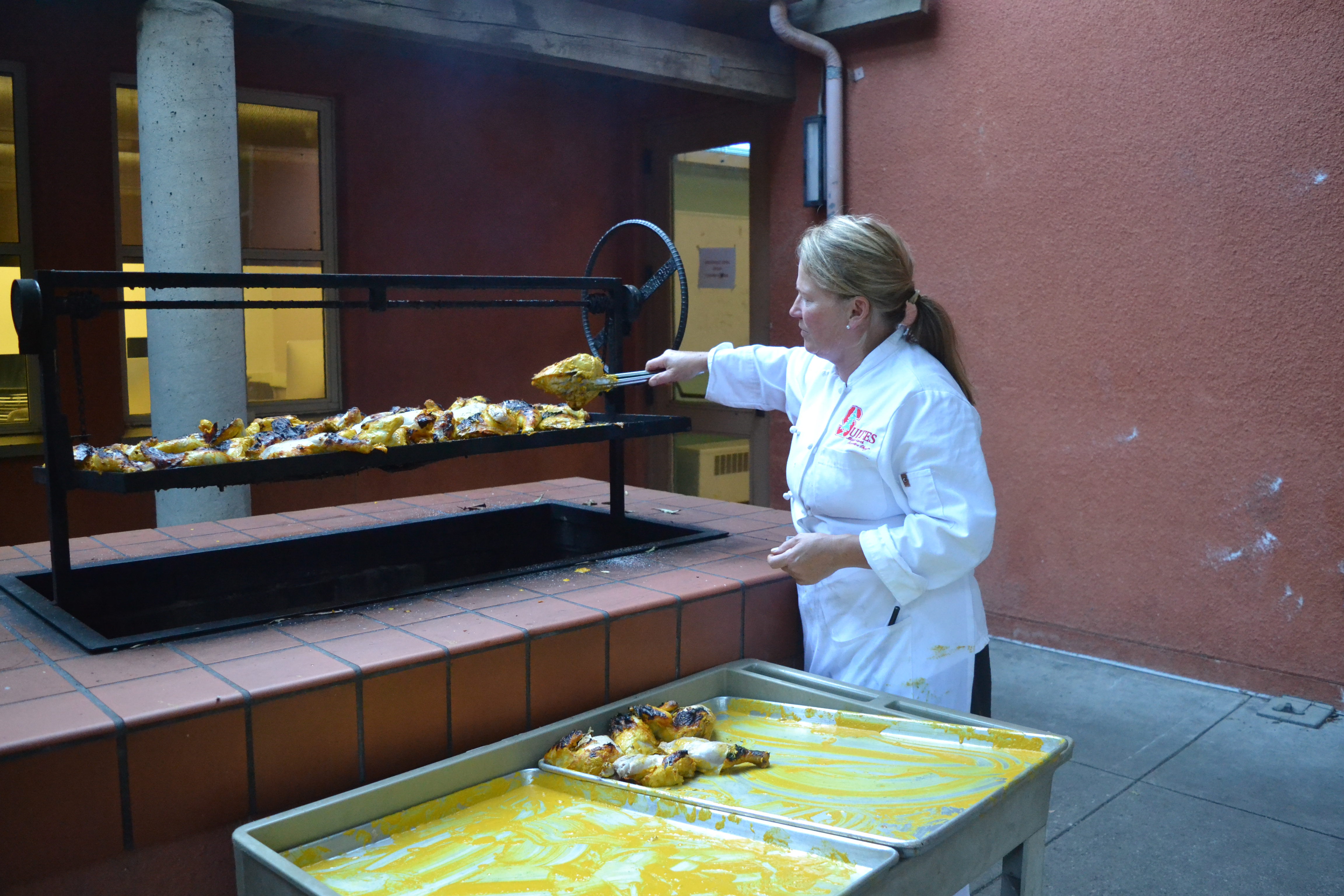Just like you and I, plants need nutrients to grow, reproduce and eventually end up in the produce area of our nearest Safeway grocery store. From there, we get the broccoli home, and it hangs out in our fridge with its carrot friends while we end up ordering pizza or going to our cousin’s friend’s partner’s birthday dinner. Eventually, someone in our household decides the broccoli is lowering the real-estate value of our fridge, and in 72% of US homes, our broccoli friend ends up in the landfill bin (“normal” trash). So then, end of story — right? Wrong.
These “green trees”, as my mom used to call them, then make their way from your street-side bin to the local landfill, which is essentially a big ditch that is dug out only to be filled back up by dump trucks of trash and dirt repeatedly until you have a mountain. The broccoli is visited by bacteria, which think it is quite tasty. In their feasting, these microbes produce methane gas, a greenhouse gas 28 to 36 times more powerful than carbon dioxide. These tiny microbes in landfills around the world produce the same combined annual emissions as 21.6 million internal combustion cars. Although this all might be super impressive microbial biology, it is not good news for addressing climate change. This linear path from fridge to trash to landfill could instead be circularized, with the broccoli entering a municipal compost program and rejoining the farm as fertilizer. So what if we could give broccoli a different funeral eulogy?
I am a Ph.D. student at Stanford University studying soil nutrient cycling in agriculture. I strongly believe that it is nonsense that our “full-of-valuable-nutrients” organics end up in the landfill, while we use fossil fuels and excessive amounts of energy to produce new fertilizer. Apparently, I am not alone in this frustration. A group of scientists compiled the most effective strategies to combat climate change in Project Drawdown and calculated that reducing food waste would be the third-most effective strategy – yet we are still not doing it. According to a survey by the National Waste & Recycling Association, 77% of Americans say they understand the importance of separating food and yard waste from general waste, and 68% say they would be willing to manage another bin for organic waste if required to do so. And this opportunity has now come for California residents, as SB 1383 requires all jurisdictions to provide organic waste collection services to households and businesses.
Food crops need nitrogen to grow, which typically comes in two forms: synthetic or organic fertilizers. Synthetic fertilizers are very energy intensive to produce, and after they are applied, they quickly wash down out of the soil and into surface-water systems that you and I rely on, along with our fish friends. The life cycle of farm nutrients should be circular. Turning food waste into organic fertilizer provides a diverse diet for soil biology while adding organic matter to the soil, which improves water and nutrient-holding capacity along with carbon storage.
Some might be concerned that designing a “sustainable” destination for food waste would disincentivize the need to reduce it in the first place. I would argue, however, that separating the food waste into organic bins finally allows people to realize that they are essentially leaving the grocery store with three bags only to drop one bag in the parking lot — indeed, the average American household wastes 31.9% of the food it buys, or an estimated $1,866 annually. That’s a lot of dough!
So, you may be thinking: well, yes, all of this makes sense — but what can I do about it? Everywhere you go, simply ask where you might find the organic waste bin. I have actually done this — waving my banana peel while asking for the organics bin — knowing full well that there was not a bin in sight. If you live in an apartment or housing complex without an organic waste bin, ask the front office to provide one. If you are a homeowner or landlord, ask your municipal government to include organic waste bins in the city’s collection program. In other words, without a strong demand from residents, governments will be hesitant to fund collection and composting programs.
Those of us who are already part of “club compost” might argue that it can be leaky and smelly. And if left for too long, it is transformed into a habitat for many (many) bacterial friends. Well, I completely agree with you. When I lived in Sweden, this problem was avoided due to their municipality-supplied paper-bag system. This system led to more frequent disposal and fewer messy situations overall. There are options. Let’s give our broccoli friend a happier story ending to its story by making sure our broccoli remains end up in the organic waste bin.
